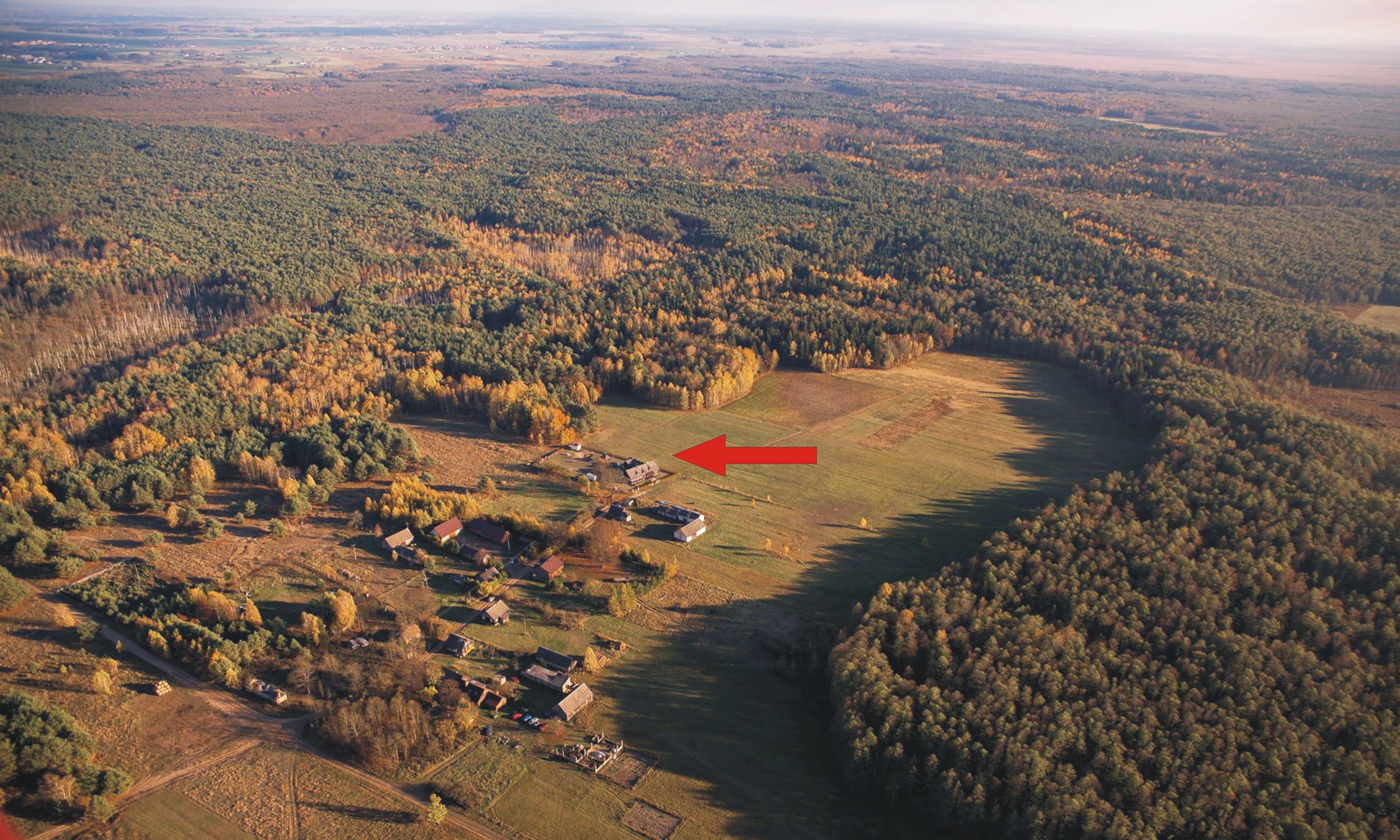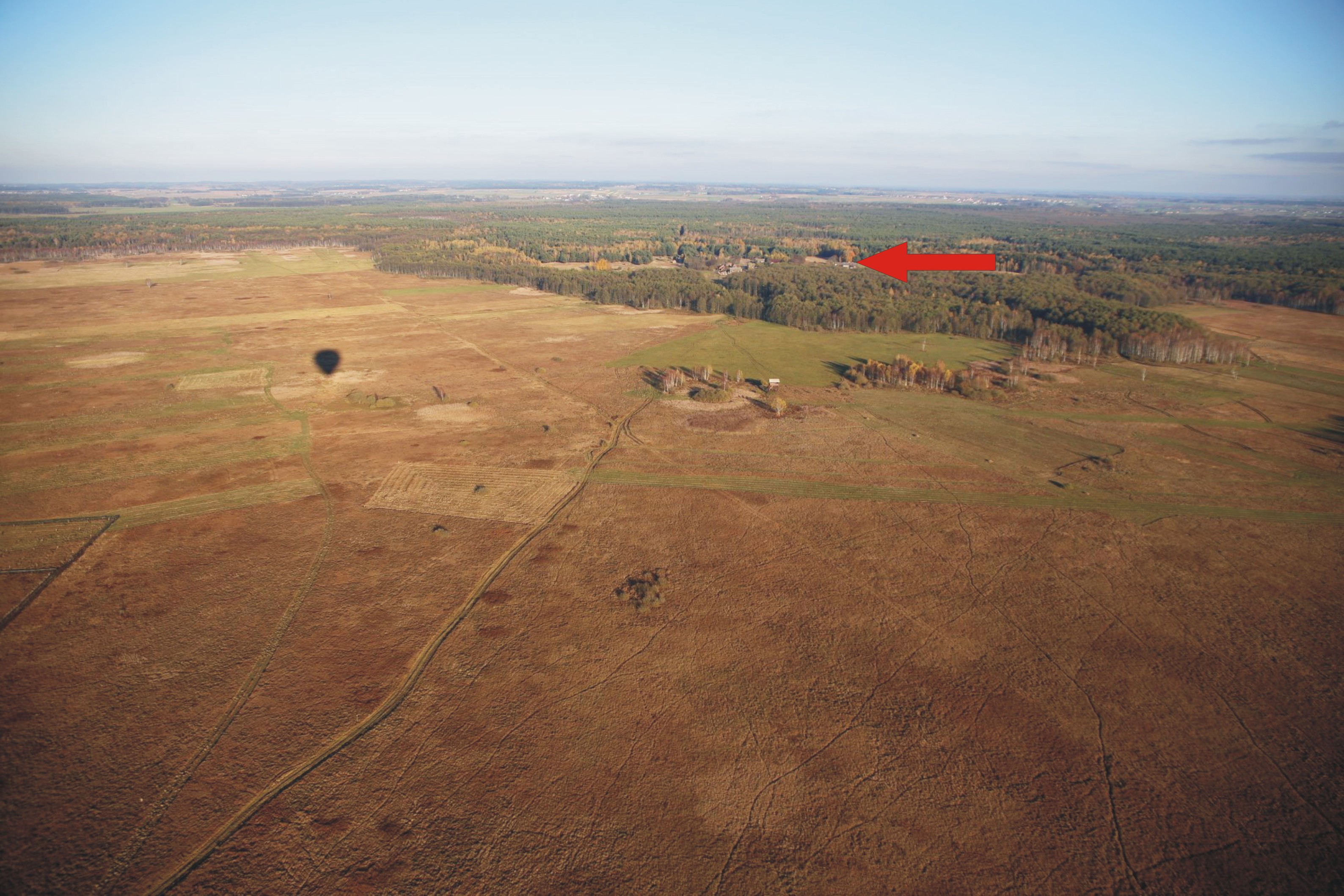
The Gugny Field Station, a research and teaching facility of the Institute of Biology at the University of Bialystok is located in the small village of Gugny, at the edge of the southern basin of Biebrza river. It lies within the borders of the Biebrza National Park that protects marshes and peatlands of Biebrza river valley, which are unique on a European scale. The Station facilitates wide-scale studies of the precious fauna and flora of Biebrza marshes, creating the scientific basis for their protection, as well as popularizing the nature of the Podlasie area in the country and abroad.
The construction of the Station was financed by the European Regional Development Fund, Polish Ministry of Science and Higher Education, private donation from Gil Dryden (USA) and funds from the University of Bialystok. The opening ceremony took place on 25th April 2008. A favorable atmosphere for research and teaching is supported by cooperative agreements signed between the University of Bialystok and the Polish Academy of Sciences, and Biebrza National Park, as well as by friendly attitudes of the authorities of Trzcianne commune.
The Field Station is a large (total area of 452 m2) wooden house facilitating the long-term stay of researchers and students, optimally up to 20 people (maximum of 30). The house blends well with the neighborhood and the landscape. Gable boarding, an alder-shingled roof, typical porch and tripartite window design reflect the traditional folk architecture of the Podlasie area.
The main part of the house is connected with two perpendicular wings. The main part includes a large seminar/dining room with fireplace and two laboratory rooms on the first floor, and two large students' bedrooms in the loft, under the roof ridge. One wing contains bathrooms and showers. One 1-person and two 2-person bedrooms with bathrooms and showers, as well as a small kitchen adjacent to the dining room, are in the other wing of the Station.
Meals may be prepared in the fully-furnished and well equipped small kitchen. There is a restaurant “Dwór Dobarz” 2.5 km of the Station, and catering may be ordered from there for larger groups at the Station. The nearest shops, as well as a bus-stop, are in Trzcianne, at 6.5 km distance. There are 10 bicycles at the Station. Connection to the internet is provided by optic cable and Wi-Fi. Power generation supports the work of devices and automatically starts in case of breaks in regular power supply.
Gugny village and the Station are placed on a meadow with pine forest on dunes on the east side and with a narrow strap of alder forest on the west that separates the meadow from the vast wetland of the lower basin of the Biebrza river. The river is at the distance of about 6 km from Gugny; it flows along the opposite edge of the valley. The valley is even wider downstream of the river and the width of the marsh reaches 13 km there.
The lower basin of Biebrza has the most natural character in the whole river valley, having suffered least from previous drainage trials. A natural zonal pattern of plant communities, resulting from the differences in hydrology, has been preserved here. Areas seasonally flooded by the Biebrza are occupied by reed beds. Moving away from the river, there are large open areas of the fen mires (sedge marshes) dominated by species of tall sedges; farther from the river are sedge tussocks. Alder woods are situated at the edge of the wet river valley. The vast areas of fen mires are diversified by sand dunes, usually overgrown by trees, and locally called “grądziki”.
The diversity of flora in the lower Biebrza basin is tremendous and includes the lady's slipper orchid, the globeflower, boreal elements as the dwarf birch, the downy willow or the Jacob’s ladder. Diversity of plant communities and habitats in Biebrza valley is reflected in species richness of the fauna. Elk (American “moose”), and ruffs lekking during their spring migration, are the symbols and the main tourist attractions of the area. A boardwalk through a fen mire in Ławki Marsh, near the Station, is the best place for watching the aquatic warbler, a small, globally threatened passerine bird. Not much is needed to enjoy the nature in Gugny; it is possible to watch elk, roe deer, foraging cranes and spotted eagles, through large windows of the seminar room in the Station while sipping the morning coffee. Black storks also visit the meadow. You may listen to the distant voice of the eagle by simply sitting in the Station’s porch, and a happy few have heard wolves’ howling.
More about the nature of Biebrza National Park and Biebrza valley may be found in:
Biebrza National Park – link
The list of scientific papers on plants, animals, climate and hydrology of the Biebrza river valley and Biebrza National Park by staff and students of the Institute of Biology, University of Białystok
From the beginning of the Station’s operation in 2008 until the end of 2015, 9 scientific projects funded by The Ministry of Science and Higher Education and The National Science Centre and 14 other projects were conducted in Biebrza valley based entirely or partially on the Station in Gugny.
Institute of Biology, University of Białystok, Gugny Field Station
Use Rules
Gugny Field Station is a research and academic teaching facility. The Station is available for the faculty, staff and students of the University of Białystok and for cooperating institutions.
All persons using the Station are required to take care of its good shape, cleanliness, and the equipment of the Station. All rules following from the location of the Station in Biebrza National Park must be complied.
Use of the Station, duration of the stay, and use of lab space must be arranged in advance with the Head of the Station. All persons staying overnight at the Station must sign in and out in the registration book.
Detailed rules:
1. Using open fire is absolutely forbidden in all parts of the Station. The fireplace in seminar/dining room and the fireplace behind the building are the only exceptions, but also there the utmost precaution is required. Smoking is not permitted in any part of the building but cigarette use is allowed outdoors. Heating coils may be used only in the kitchen.
2. Only light and clean shoes may be worn in the Station. Field footwear must be left in the hall.
3. Preparing meals may take place only in the kitchen. The dishes must be washed after the meal and the kitchen must be carefully cleaned.
4. Moving pieces of furniture among rooms is forbidden.
5. All damage to the equipment and furnishing must be reported to the Head of the Station who will determine the cost of compensation to be paid.
6. Pets in the Station only by permission.
7. At the end of the stay, the Station must be cleaned and one must make sure that all windows are closed and outer doors are locked. The fridge in the kitchen must be emptied out of all stored food. All garbage must be bagged and removed upon departure. The key is to be passed over to the authorized person. Passing the key is also required when the Station is left for night and nobody is there.
8. All comments regarding the Station are to be reported to Bogusław Lewończuk, cell phone No. 66 46 77 976.
9. Persons not respecting the above rules will be asked to leave the Station.
Białystok, 16 November 2015
(–) Prof. dr hab. Jan R.E. Taylor
Head of the Station
Head of the Station:
prof. dr hab. Jan R.E. Taylor, tel. (85) 738-83-71, e-mail taylor@uwb.edu.pl
Administration:
mgr Bogusław Lewończuk, tel. (85) 738-83-73/84-35, e-mail bodekl@uwb.edu.pl
Telephone at the Station: 692-101-741 (Monday to Friday, 7:30–15:30).
Bank account: PL 86 1160 2202 0000 0000 6000 1031
with the note "support for Gugny Field Station".
The name of the bank: Bank Millennium S.A. (ul. Stanisława Żaryna 2A, 00-593 Warszawa).
International code (SWIFT): BIGBPLPW.
Location of the Station
Coordinates:
N53° 20’ 54.05” E22° 35’ 33.85”
N53.3483 E22.5927

Gugny village and the Field Station (pointed out with an arrow); the view towards SE (photo by Sławomir Młynarski).

The view from Biebrza marshes towards NE. The Station is indicated with an arrow. (photo by Sławomir Młynarski).
Useful links:
Global Database of Biological Field Stations